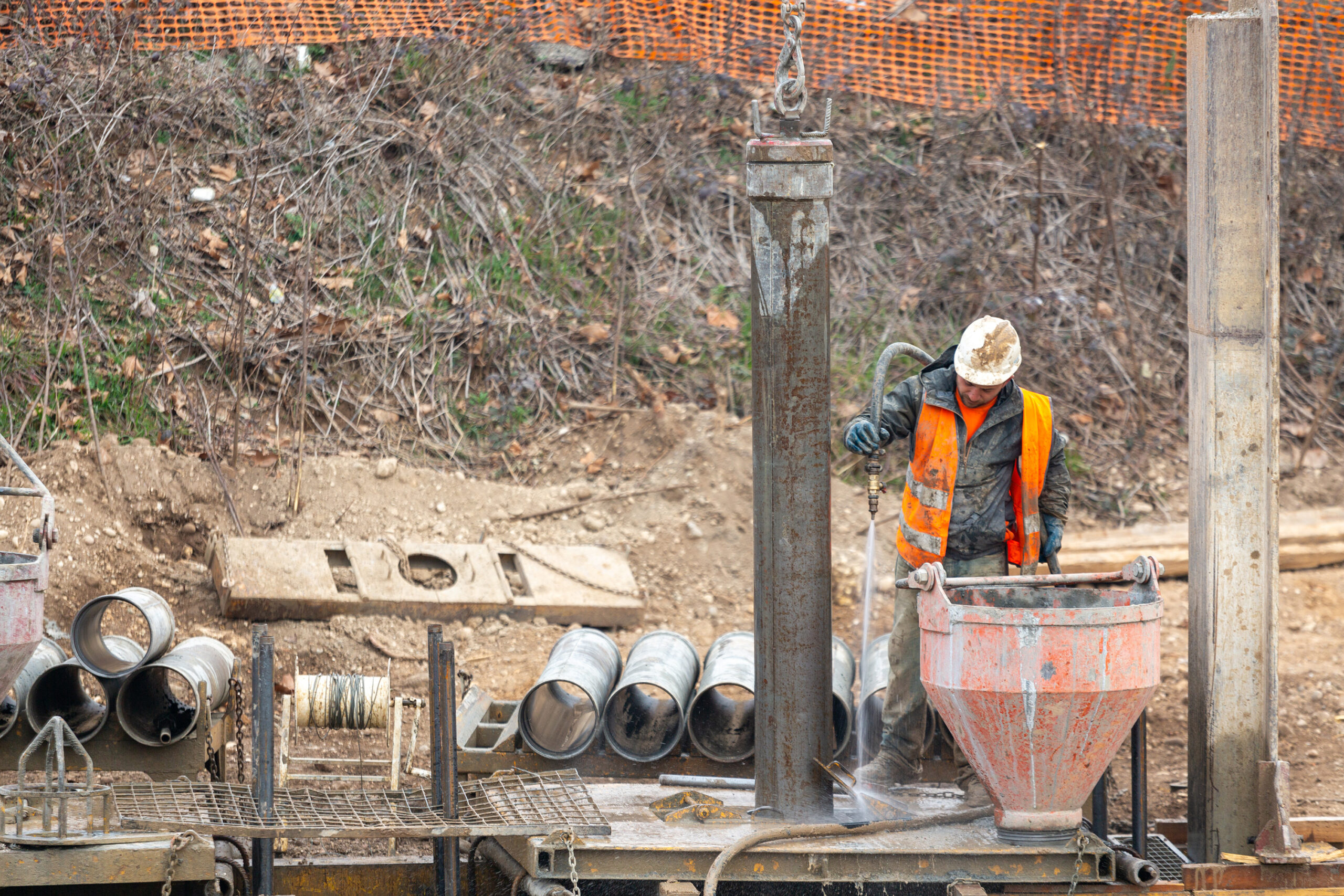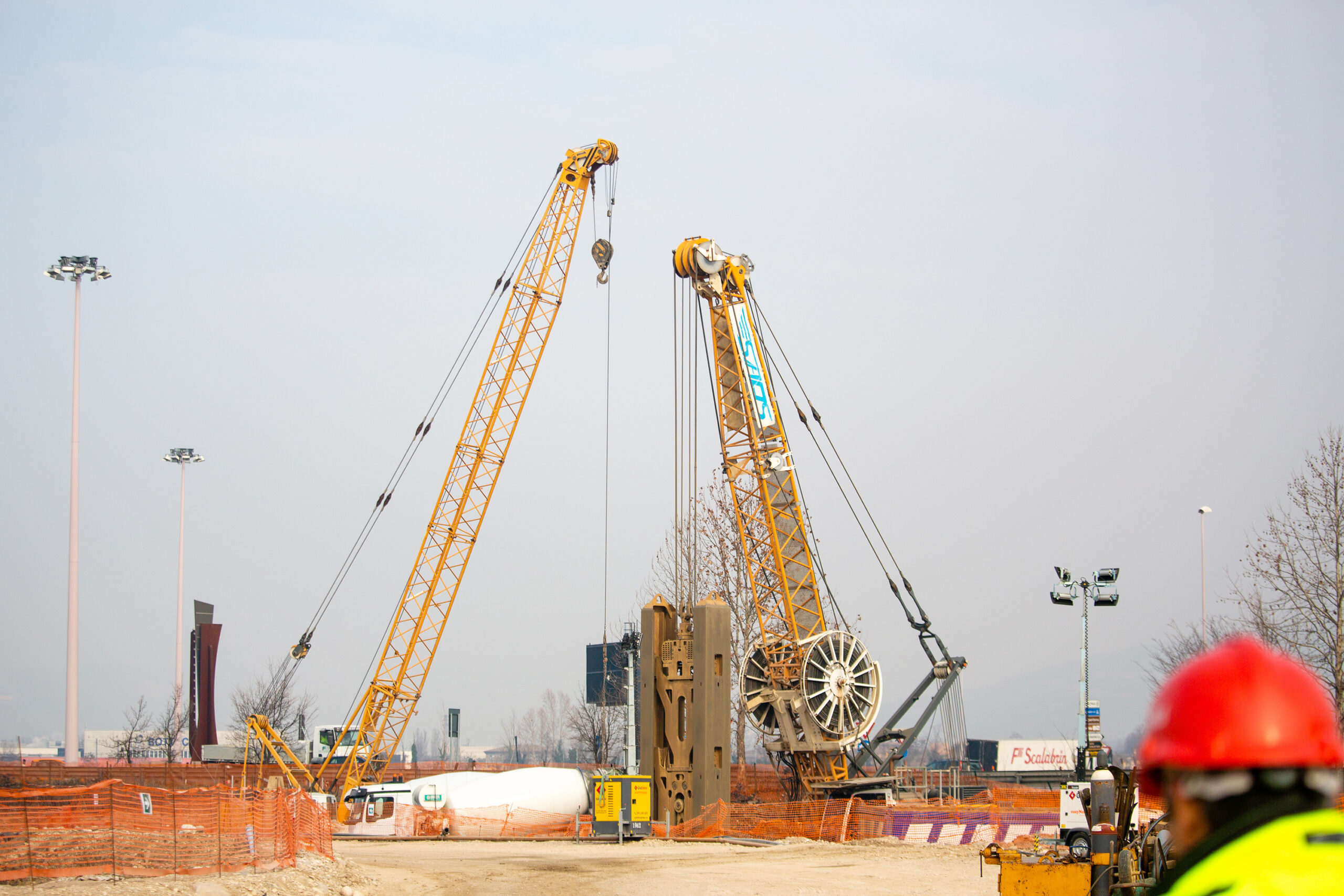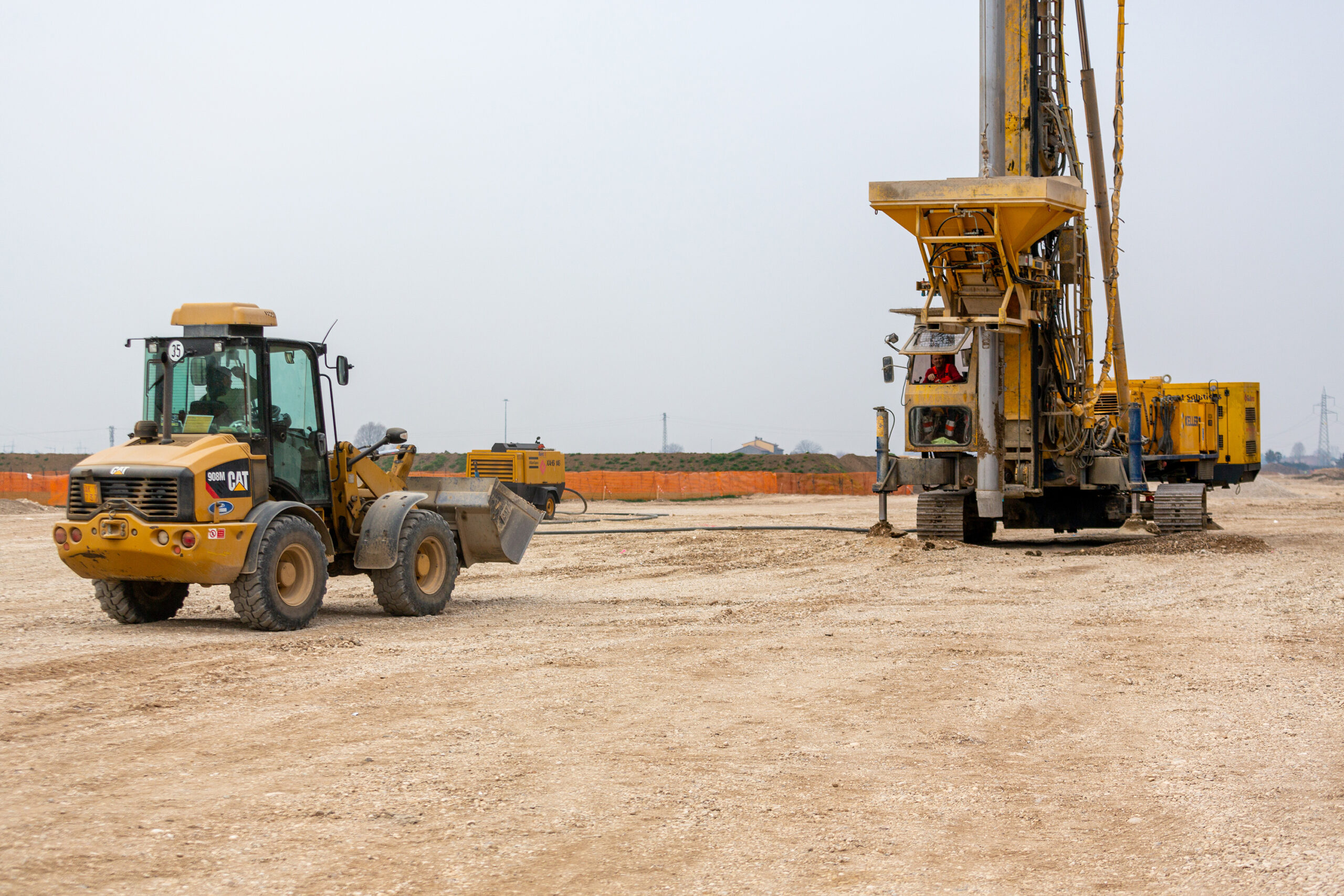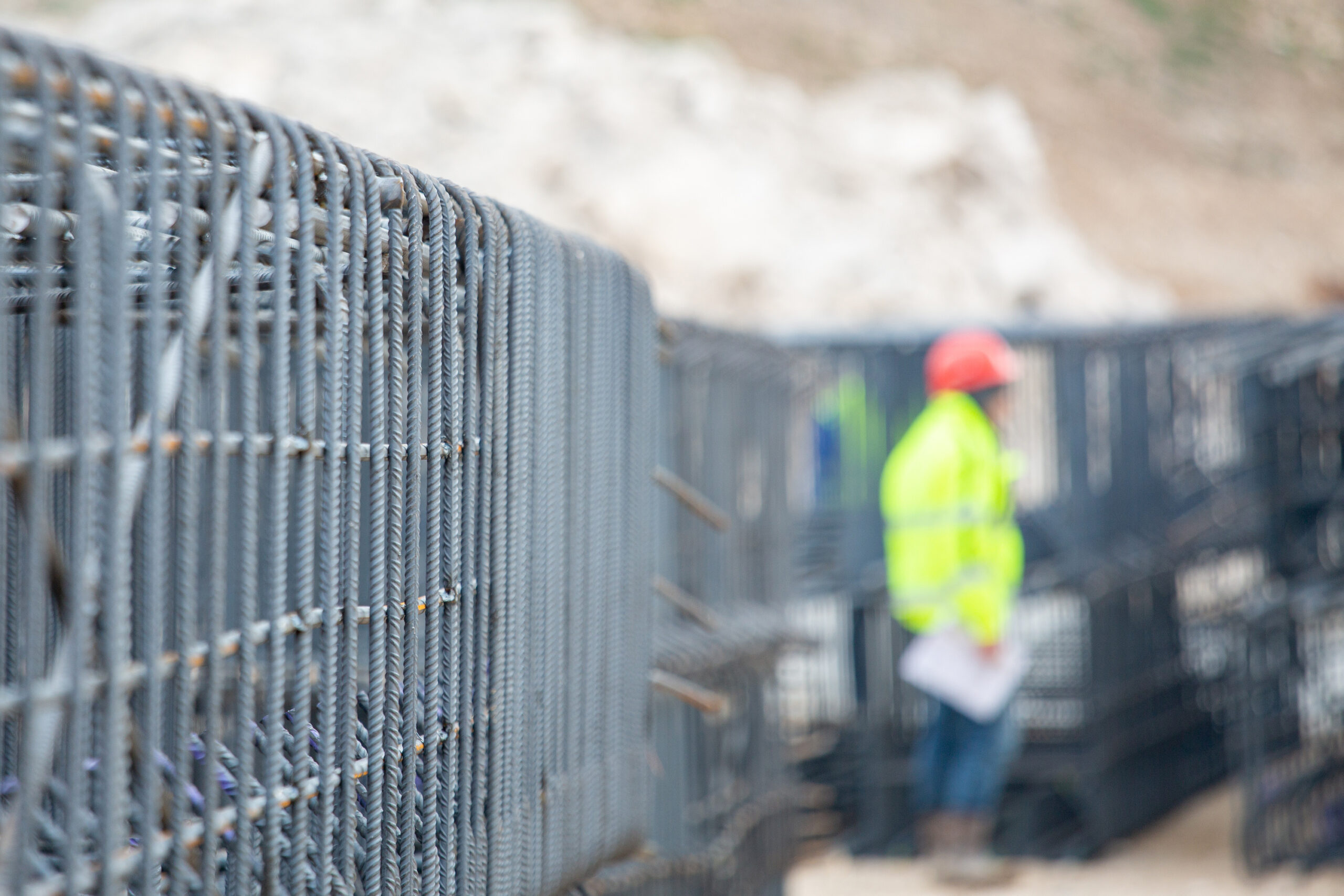Geotechnical, geological and hydraulic Final Design for the Verona-Padua High Speed line
Sustainability and safety of large infrastructure.
The Verona-Padua High Speed/High Capacity railway line is in the Mediterranean Corridor which reaches the Ukrainian border from Spain and is part of the trans-European strategic transport network (TEN-T core network), the preferred itinerary for traffic between Europe and Asia. In Europe, it unites industrialised regions with the developing eastern areas, connecting south-west European countries with East European countries. The line, designed for a speed of up to 300 kph, is the first functional lot with an overall length of 44 km and extends from Verona to the fork at the entrance to Vicenza. The route is divided into two construction lots – from Verona Montebello Vicentino and Montebello Vicentino to Bivio Vicenza, up to the entry to the existing historic line.
In the scope of the Final Design, NET Engineering was responsible for the hydrogeological, hydraulic, geotechnical, geological and seismic aspects for both the general organisation and the Final Design of the Verona-Bivio Vicenza section and the individual works on the route. NET Engineering’s role also includes assistance during the creation and final testing of the works as well as drafting the as-built technical documentation.
Hydrologic and hydraulic studies
The hydrologic and hydraulic studies of the watercourses interfering with the High-Speed line concerned some main crossings and all the secondary ones. The route intersects the River Adige from Verona to San Bonifacio, then continues from Montebello Vicentino to Vicenza and intersects the Brenta-Bacchiglione basin hydrographic system, i.e. the union of the hydrographic basins of the Brenta, Bacchiglione and Gorzone rivers.
The hydrological analysis concerned the study of more than 70 watercourses using traditional methods and mathematical models (HEC-HMS), defined according to the size of the hydrographical basin analysed.
NET Engineering calculated the maximum capacity of secondary basins during the construction for the sizing of the professional works, intended to ensure both hydraulic continuity and safety during the execution stage.
The hydraulic study, carried out to check the outflow conditions in the area involved in configuring the current situation, the project configuration and the construction site configuration, was conducted using the uni-dimensional permanent motion calculation program developed by the U.S. Army Corps of Engineers which provides a suitable representation of the situation and can also give the flooding areas in pre- and post-work conditions.



Geotechnical studies
The railway line extends through a large portion of the Veneto region. Along some sections, there are geotechnical problems such as soft soil, confined aquifers, high seismic danger, potential liquefaction of the soil, etc. In addition, the route involves an urbanised area and often runs close to the existing historic line, intersecting the A4 motorway. The design challenge within this framework was also to minimise the impact during construction on the region and operation of these two essential infrastructures for Italy. The general geotechnical and geological organisation took a cue from the Final Design to define an integrated campaign of in situ and laboratory research along the whole line. In detail, the geophysical surveys conducted enabled the integration of information on the characteristics of the local seismic response into the Final Design. Further, confidence on the features of the land increased based on the in-depth analyses carried out for the geotechnical and geological organisation.
As a result, this allowed fine-tuning of the design of works on the line (embankments viaducts and artificial tunnels). Geotechnical, geological, hydrogeological, geomorphological, lithological and seismic charts were prepared accompanied by geotechnical and geological profiles. Where necessary, information was augmented through tracing transverse geological-geotechnical-hydrogeological sections with respect to the route. As far as the railway embankments were concerned, the analysis carried out included the geotechnical framework and characteristics, study of the construction stages and calculation of sinking induced on the designed line and the route in operation in addition to long-term stability and seismic checks. NET Engineering developed the design of land consolidation (rigid inclusions, piles, etc.) and anti-liquefaction (gravel columns, compacting, etc.) operations to respond to the features of the land. The project for the viaduct foundation system and, at the same time, that for the professional works for the construction of the foundations were also developed. For this particular aspect, the design challenge was to avoid impact on the area and nearby infrastructure, curating the Final Design of monitoring systems intended to check the integrity, functionality and safety of the works.



Contributing to sustainability of large works
NET Engineering’s work for the Final Design of the Verona-Padua HS/HC line bears witness to how engineering practice can easily contribute to the sustainability of large infrastructure works. One example is the use of gravel columns for the anti-liquefaction of soil. This method has no environmental impact because it entails use of natural elements without any type of ‘synthetic’ additive. In addition, creation of gravel columns on site involves very dust reduced emissions and silent working, a feature which makes it sustainable in terms of noise pollution. The hydrologic and hydraulic analyses had the same aim; the hydraulic compatibility of the infrastructure in its environment was analysed so that the state of the area could be guaranteed if not improved.

